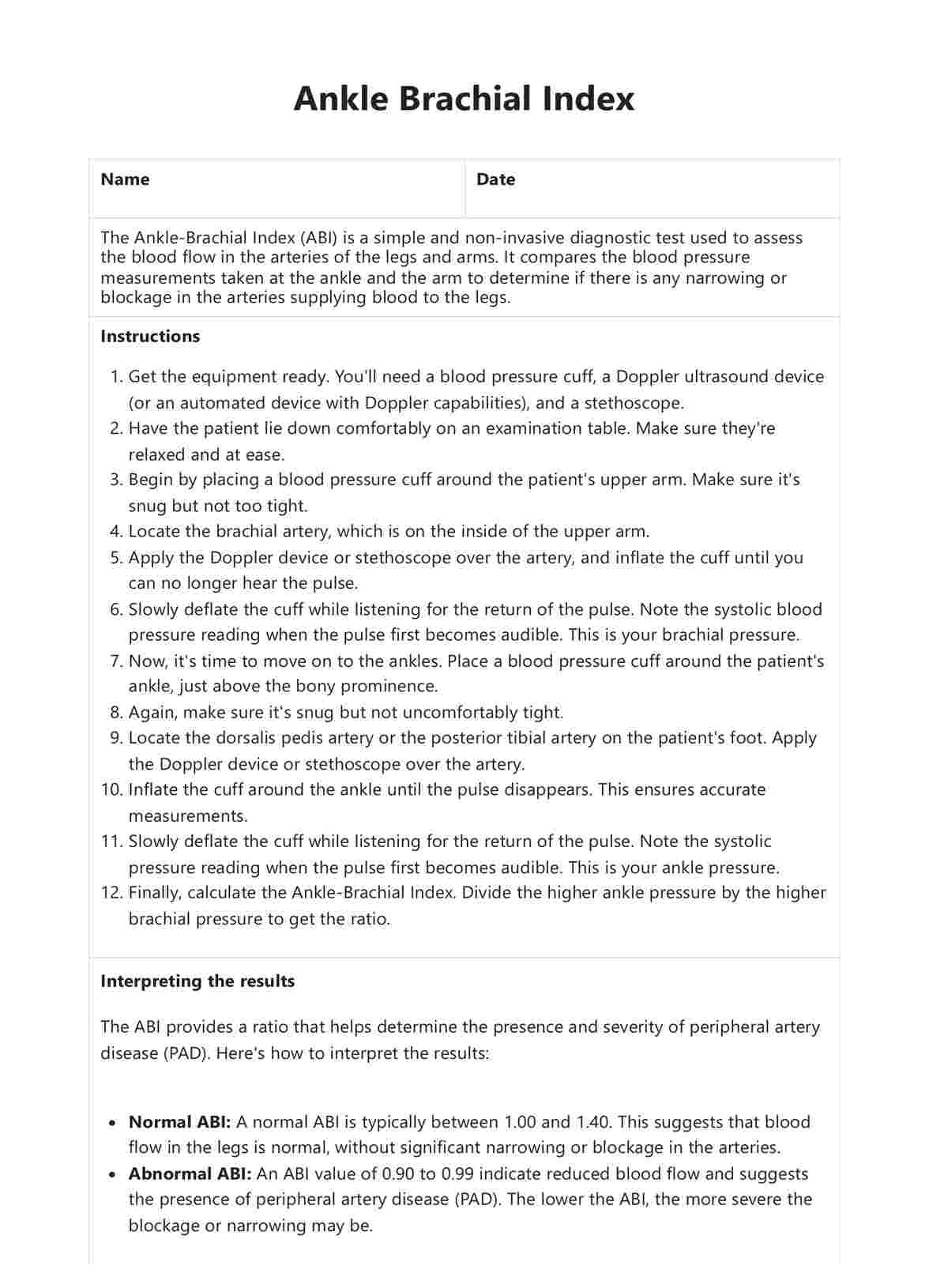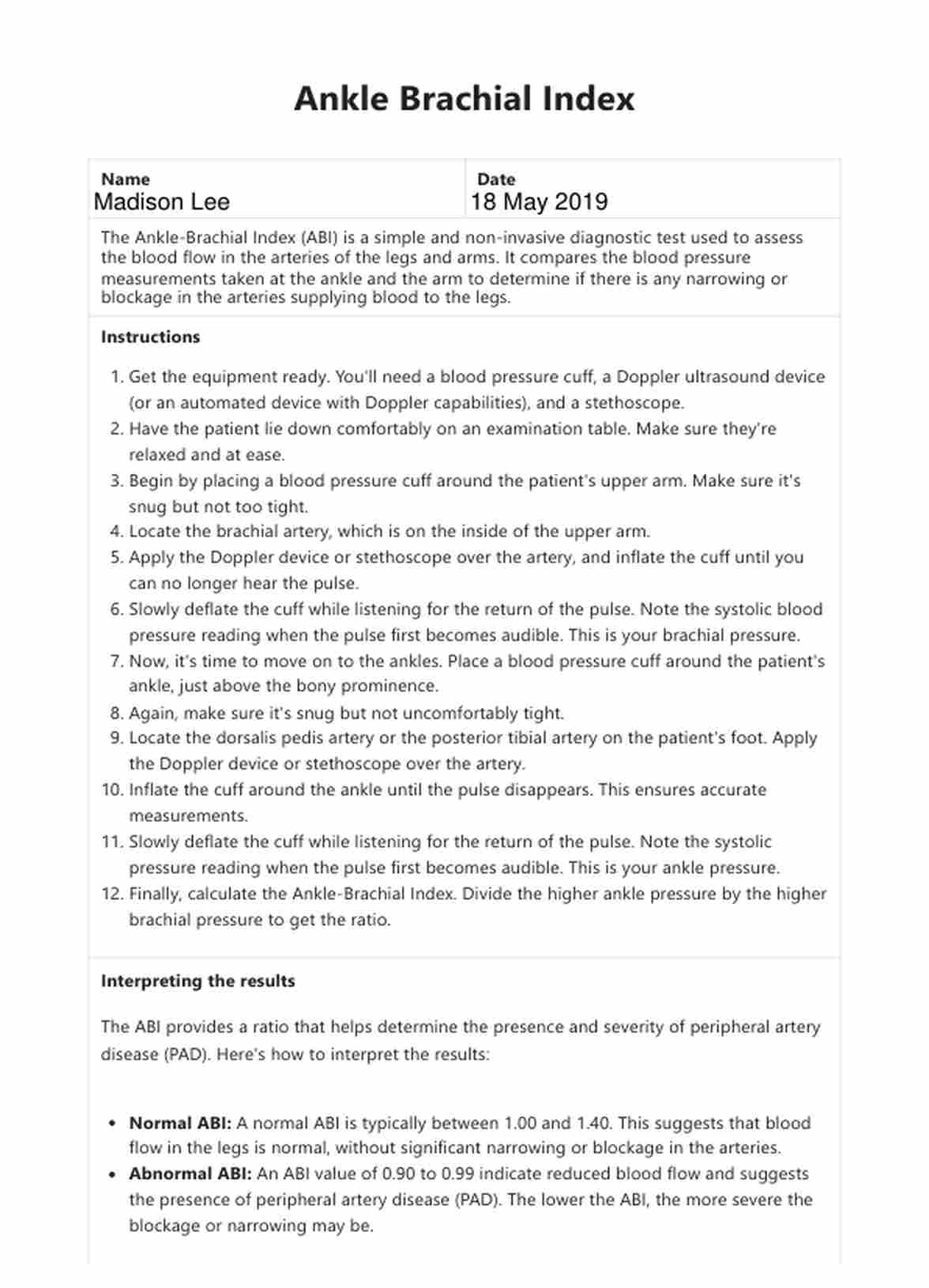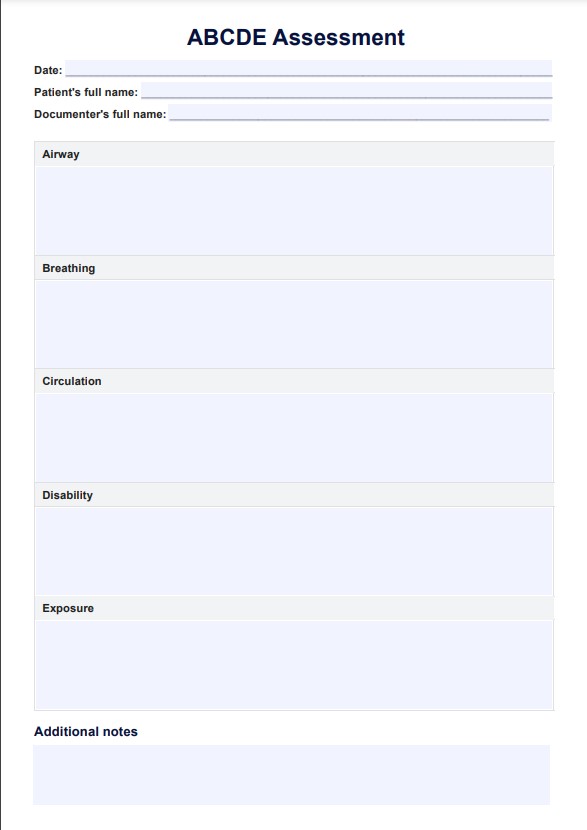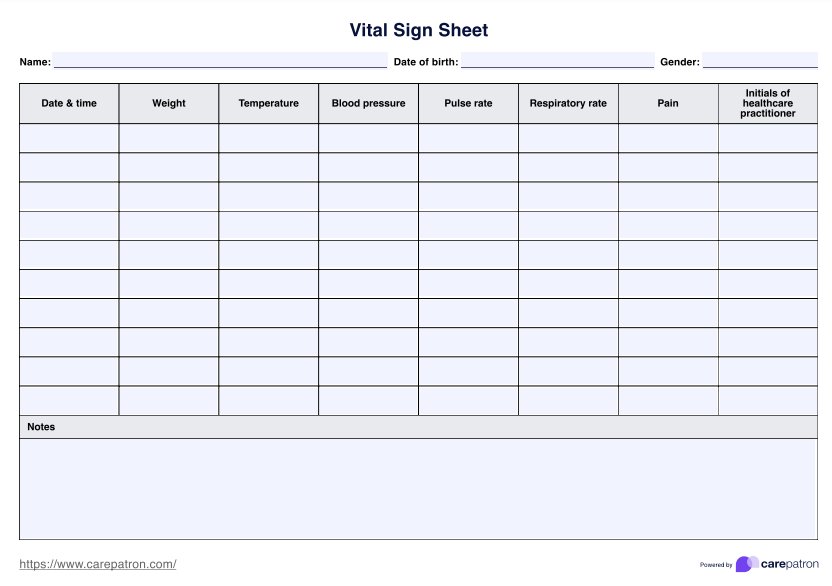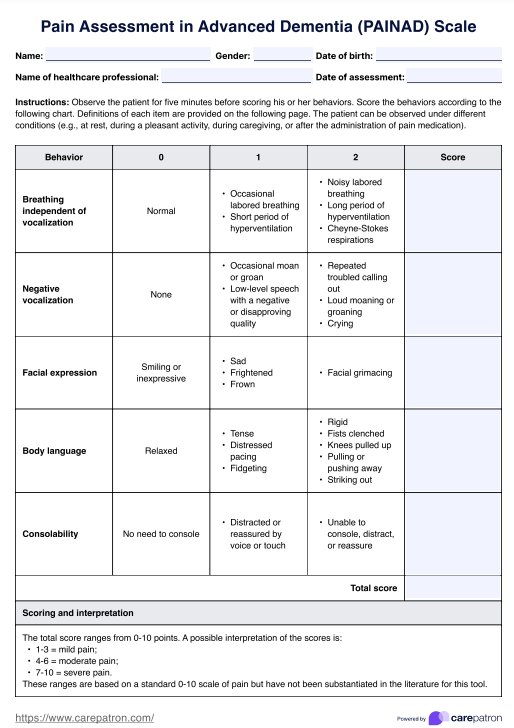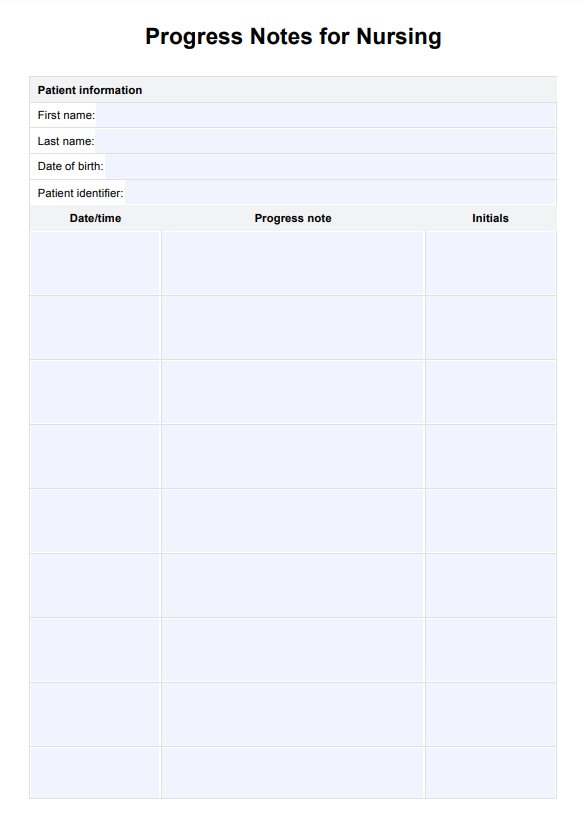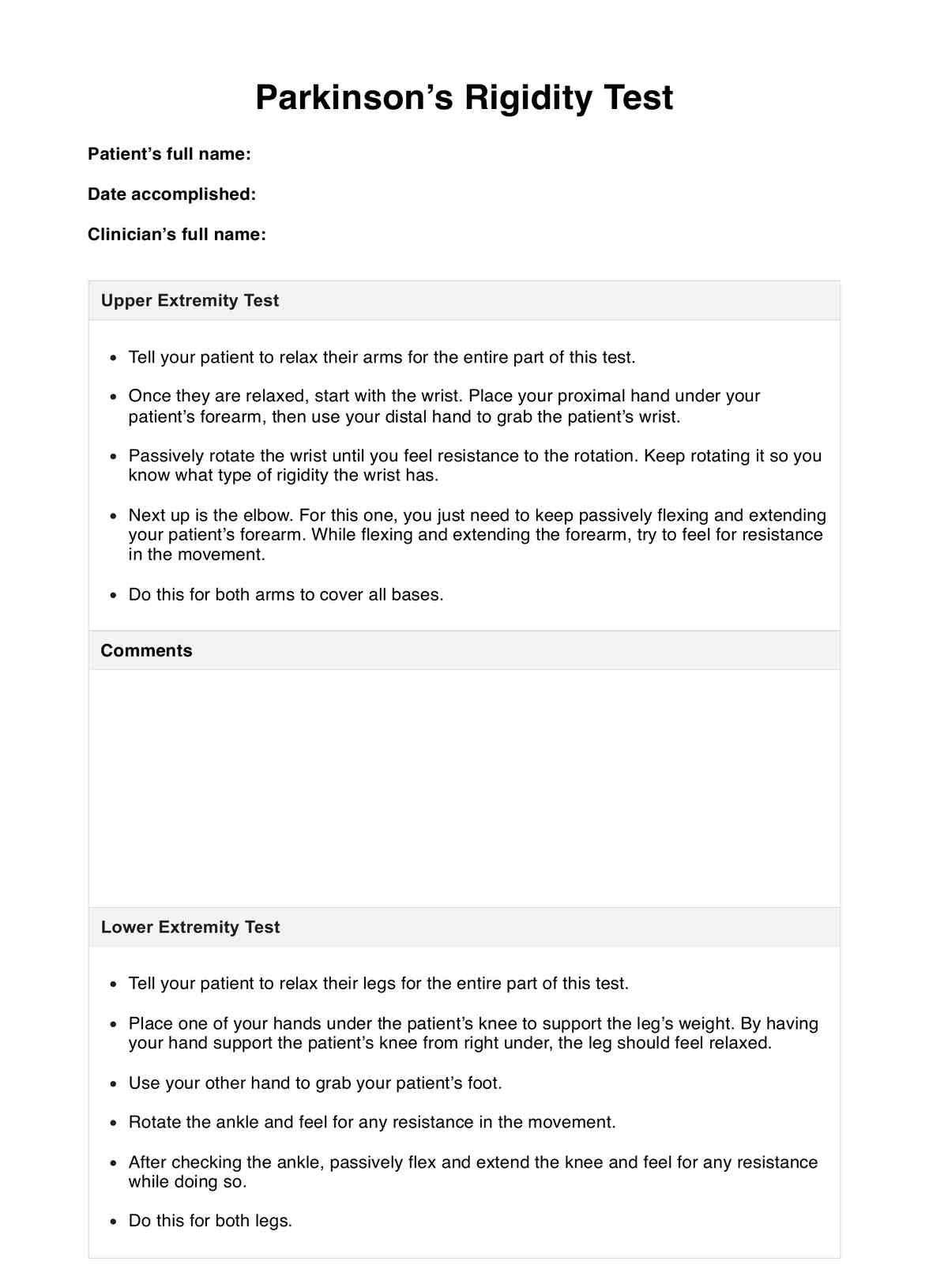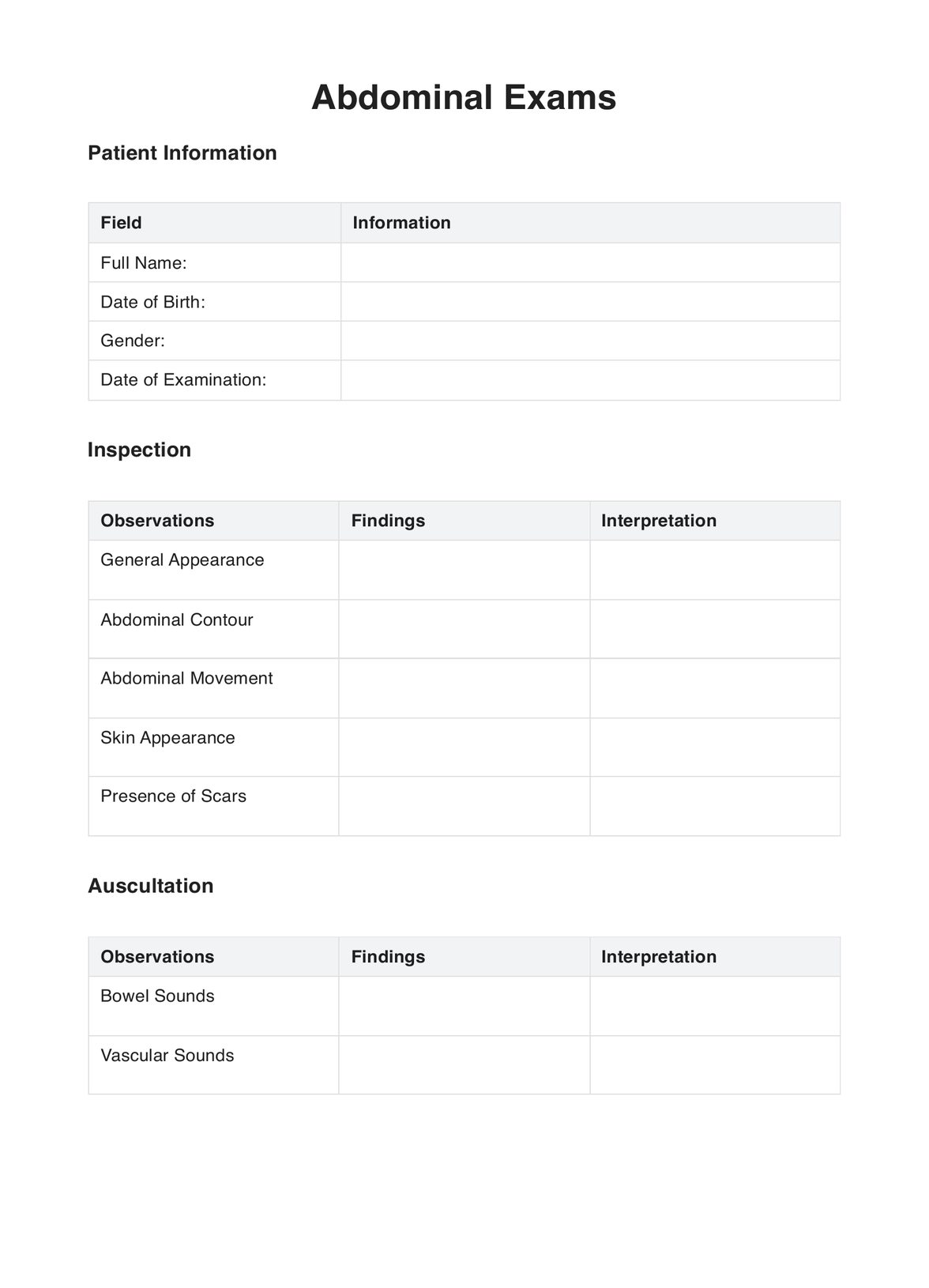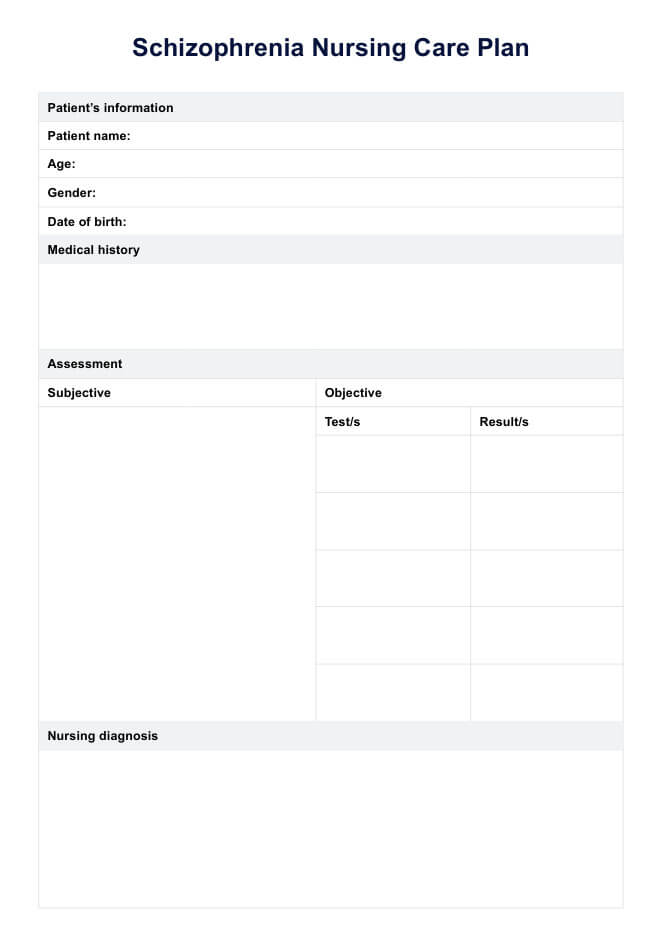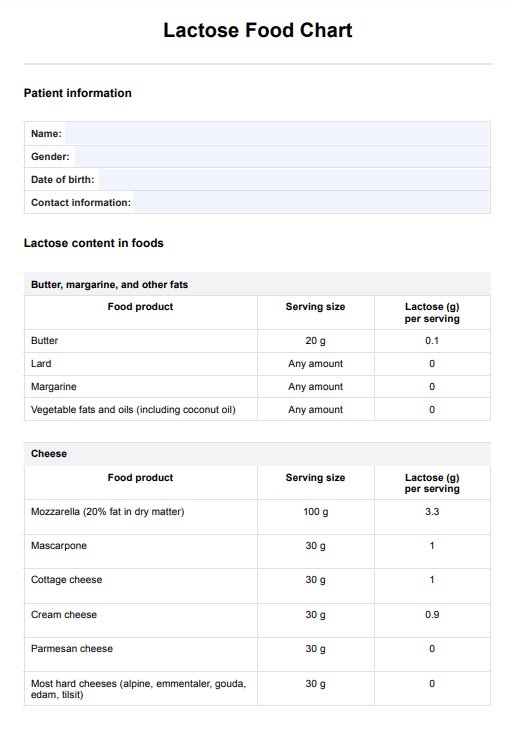Ankle Brachial Index
Discover the Ankle Brachial Index and how to use the test to evaluate blood flow in the legs and arms' arteries. Download our PDF template to learn more.


What is an Ankle Brachial Index (ABI)?
The (ABI) is a simple and non-invasive diagnostic test used to assess the blood flow in the arteries of the legs and arms. It compares the blood pressure measurements taken at the ankle and the arm to determine if there is any narrowing or blockage in the arteries supplying blood to the legs.
During an ABI test, blood pressure cuffs are placed on both arms and ankles. The systolic blood pressure (the higher number in a blood pressure reading) is measured using a Doppler ultrasound device or an automatic device. The cuff is inflated to temporarily stop the blood flow and then slowly deflated while the healthcare provider listens to the blood flow using the Doppler device.
The ankle pressure is divided by the brachial (arm) pressure to calculate the ankle-brachial index. A normal ABI is typically between 1.00 and 1.40, indicating normal blood flow. Values 0.90 to 0.99 suggest narrowing or blockage in the leg arteries, which may indicate a risk of peripheral artery disease (PAD). On the other hand, values less than 0.90 can indicate rigid arteries or calcification.
Ankle Brachial Index Template
Ankle Brachial Index Example
How does this Ankle Brachial Index test work?
The Ankle Brachial Index is an excellent tool for assessing your patient's PAD risk. Follow these steps to use our template:
Step One: Access the free Ankle Brachial Index test
Download our free ABI template using the link provided on this page or through the Carepatron app. The template can also be found in our resources library.
Step Two: Explain how the ABI works
Discuss how the Ankle Brachial Index works with your patient. Explain that the test will use an arm and ankle cuff to compare their systolic blood pressure in each leg.
Step Three: Prepare your equipment
Set up your equipment for the test. You will need a blood pressure cuff for each arm and ankle, a Doppler ultrasound device (or an automated device with Doppler capabilities), and a stethoscope. Make sure the cuffs fit both arms and ankles properly.
Step Four: Conduct the exam
You may use the template's instructions to administer the ABI test. Begin by measuring the patient's blood pressure in both arms, then switch to the ankles. Ensure that you are getting an accurate reading from each cuff.
Step Five: Interpret the results
Analyze the results of the ABI test. The normal ABI range is between 1.00 and 1.40. If the ABI is lower than 0.99, this can indicate a narrowing or blockage of the arteries or PAD.
Step Six: Provide your patient with some guidance
It's important to inform your patient about PAD and lifestyle modifications they can make to reduce their risk. This may include quitting smoking, increasing physical activity, and making dietary changes.
Ankle Brachial Index Interpretation
The Ankle Brachial Index test is a valuable tool for detecting PAD. It indicates how well blood flows through the arteries and can reveal any areas that may be blocked or narrowed. Here's how to interpret the systolic blood pressure reading:
- 1.00 - 1.40: This range suggests normal circulation.
- 0.90 - 0.99: This range suggests a mild narrowing of the arteries and an increased risk for PAD.
- Below 0.90: This range indicates a severe narrowing of the arteries and a high risk for PAD. This result may require further testing for a complete diagnosis.
It's important to note that the Ankle Brachial Index test is not definitive and should not be used to diagnose PAD. It's only one part of an overall assessment.
When to use this ABI Test?
The Ankle Brachial Index test helps diagnose PAD. It should be used as part of a comprehensive medical assessment. You can also administer this exam to:
Monitor your patient’s PAD symptoms
This ABI test can help you track your patient's symptoms over time and determine how their condition progresses. It can also help your patient better understand their condition and take necessary actions.
Identify risk factors
This test can help you identify risk factors associated with the development of PAD. It's an essential tool in helping you develop a comprehensive treatment plan for your patient.
Assess the effectiveness of medications and treatments
The Ankle Brachial Index can also help you assess whether certain medications and treatments are helping improve your patient's condition. By tracking the progress of their symptoms, you can determine how well they are responding to treatment and make any necessary adjustments.
Who are these Ankle Brachial Index PDF for?
The Ankle Brachial Index is useful for diagnosing and treating PAD patients. This is especially helpful for the following:
- Physicians
- Nurses
- Physical therapists
- Podiatrists
- Cardiologists
- Occupational therapists
This ABI test can also be used in outpatient clinics, rehabilitation facilities, and hospitals.
.png)
Benefits of free Ankle Brachial Index
The Ankle Brachial Index provides numerous benefits for medical professionals and their patients. Here are some of them:
It's easy to use and digital
Our free Ankle Brachial Index test is designed with convenience in mind. It is readily available in a digital format with comprehensive instructions, allowing you to quickly assess your patient's condition.
It's non-invasive
The Ankle Brachial Index test is non-invasive, making it safe and easy for doctors and patients. You can also get results in minutes.
It fosters clear communication between you and your patient
The Ankle Brachial Index provides a clear and objective measure of your patient's condition. This can help facilitate better communication between you and your patient, allowing them to be more involved in their care.
It can inform treatment decisions
The results from the Ankle Brachial Index test can be used to inform treatment decisions for your patient's condition. It can help you determine if your patient is at risk for future complications and provide a baseline for monitoring their progress.
Commonly asked questions
The Ankle Brachial Index measures the ratio between the systolic blood pressure at your patient's ankle and your arm. A range of 1.00-1.40 indicates that both pressures are equal, while an abnormal reading of 0.90-0.99 or below 0.90 suggests a decrease in blood circulation or risk of PAD.
The Ankle Brachial Index is a simple test that can be performed in your office or at the patient's bedside. It involves taking systolic blood pressure measurements from both the arms and ankles using a digital sphygmomanometer (blood pressure cuff). Then, divide the systolic pressure measured at the ankle by the systolic pressure measured at the arm. The result is the Ankle Brachial Index.
An Ankle Brachial Index can be used to help screen for PAD. It is most commonly used when patients report leg pain or claudication (pain in the legs that occurs during exercise). Additionally, it helps assess the risk of developing stroke and heart attack.


